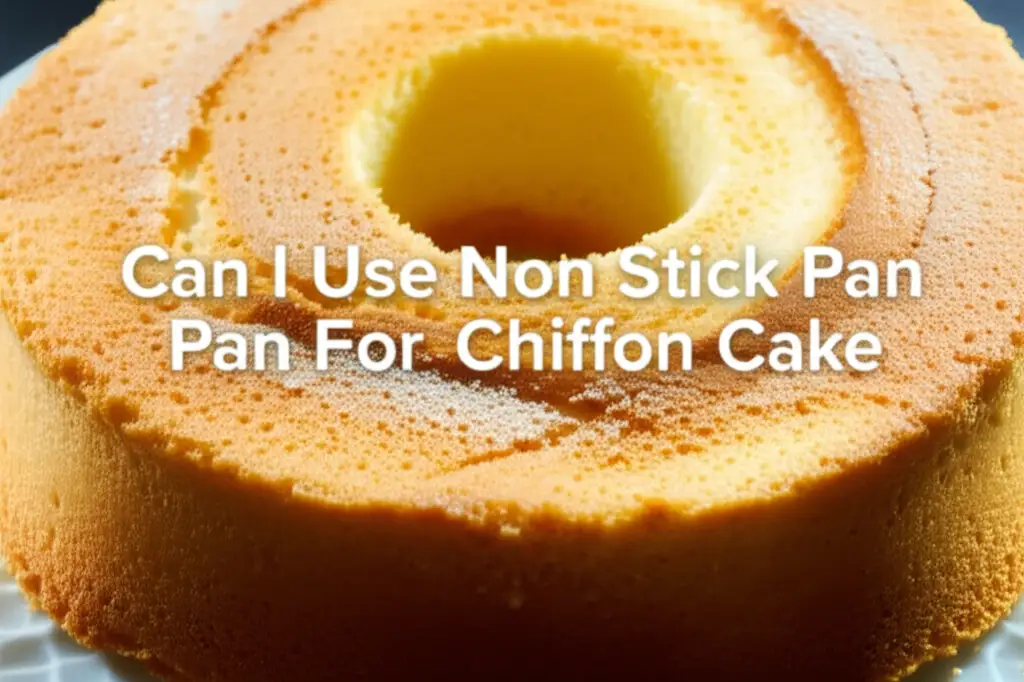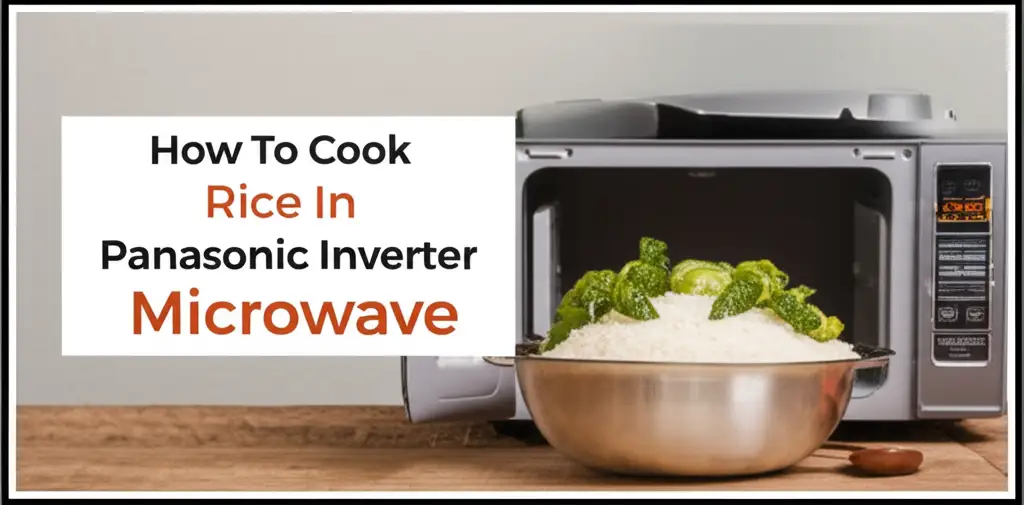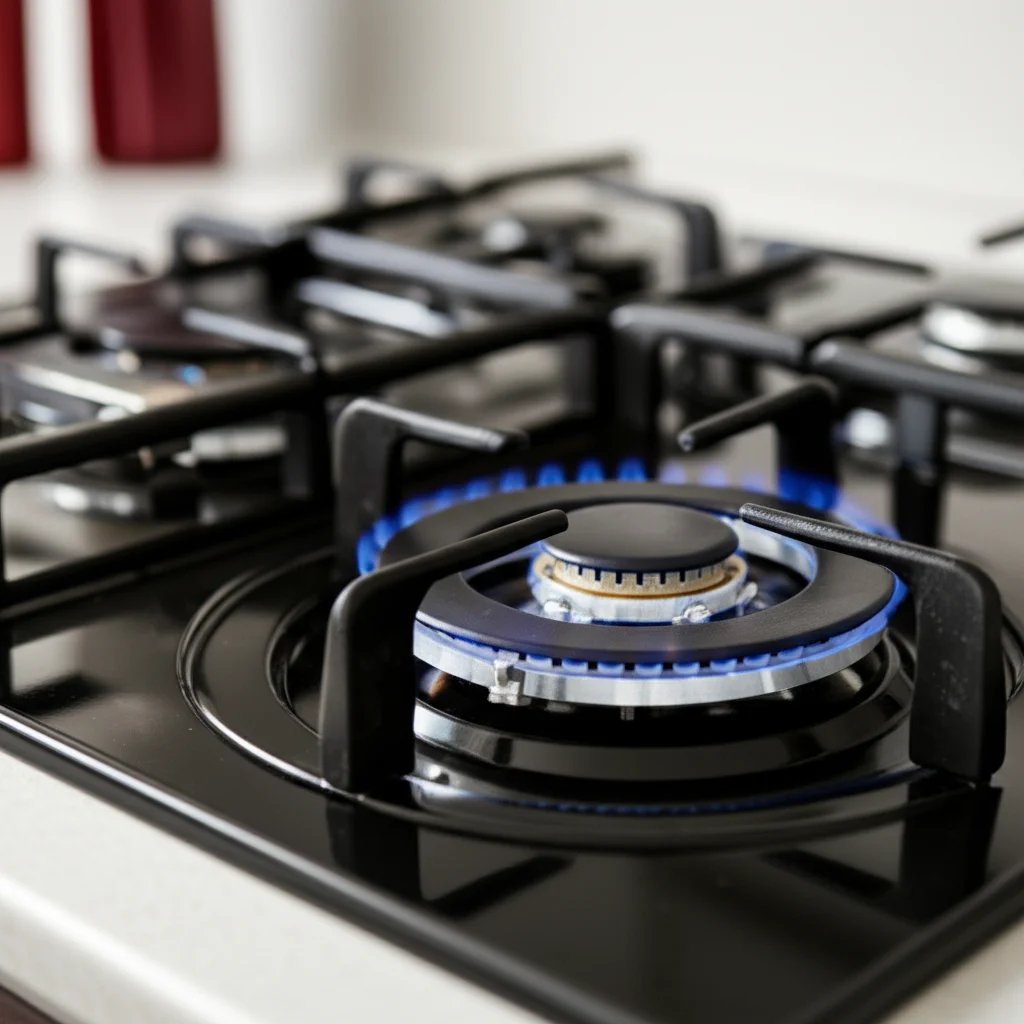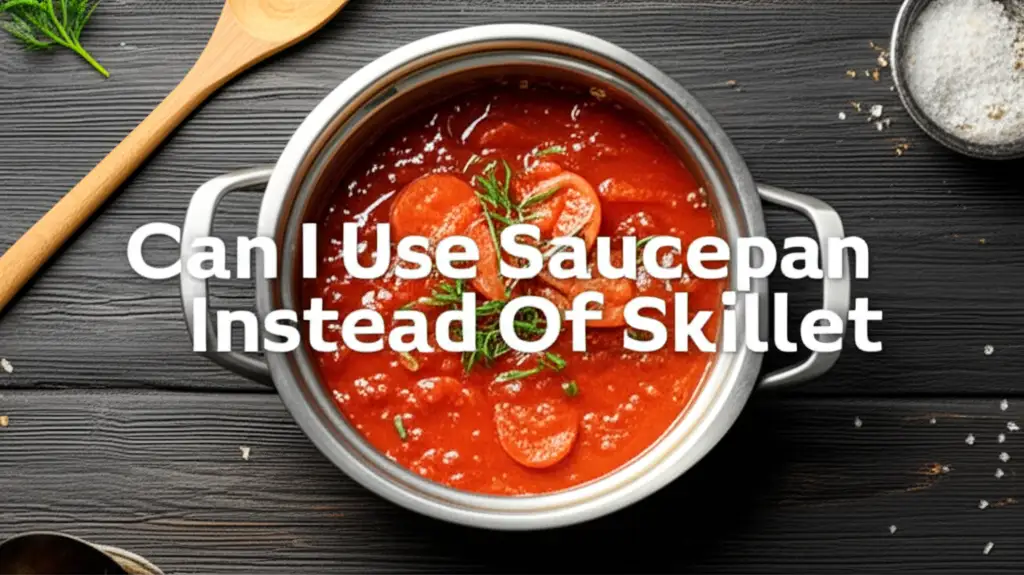· Katria Melrose · Baking · 21 min read
Can I Use Cake Pan For Banana Bread
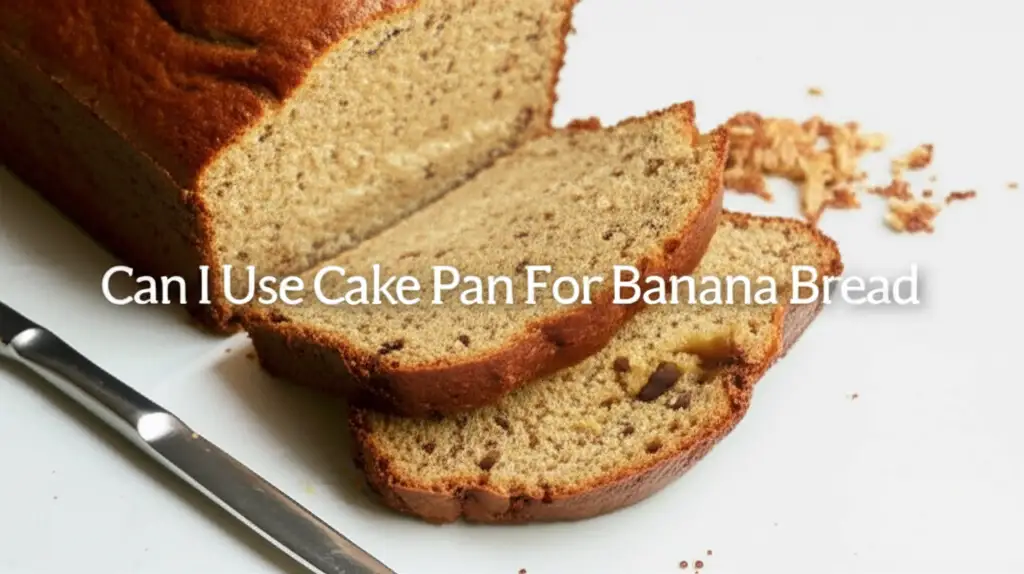
Baking Banana Bread in a Cake Pan: Yes, You Can!
Nothing beats the comforting aroma of freshly baked banana bread filling your home. It is a timeless classic, loved for its moist texture and sweet flavor. Often, we reach for a loaf pan to bake this quick bread. But what happens when your loaf pan is busy, or you do not own one? A common question arises: “Can I use a cake pan for banana bread?”
Many home bakers face this dilemma. You might have a collection of round or square cake pans readily available. The good news is, you absolutely can use a cake pan for banana bread. However, successful substitution requires understanding key differences. This article guides you through adapting your recipe and baking process. We will explore pan sizes, necessary adjustments, and essential tips for a perfect bake.
Takeaway
- Yes, you can use a cake pan for banana bread: It is a viable alternative when a loaf pan is unavailable.
- Adjustments are crucial: Pan size, shape, and material affect baking time and temperature.
- Prepare the pan well: Proper greasing and flouring prevent sticking.
- Monitor baking closely: Banana bread in a cake pan may bake faster or differently.
Can I Use a Cake Pan for Banana Bread?
Yes, you can use a cake pan for banana bread. This common kitchen swap is very possible. You will need to consider the pan’s shape and size. These factors affect how your banana bread bakes. Minor adjustments to baking time or temperature may be necessary for the best results.
Understanding Your Baking Pans: Loaf vs. Cake
Baking different types of goods requires specific tools. Loaf pans and cake pans are designed for different purposes. Understanding their unique qualities helps you make good choices for your baking. This knowledge also helps you adjust recipes.
The Standard Loaf Pan
A traditional loaf pan is deep and rectangular. It is specifically designed for quick breads, yeast breads, and meatloaf. The shape encourages even baking and a consistent rise. It gives the baked good a tall, rectangular profile. This shape is ideal for slicing.
Loaf pans typically come in a 9x5 inch size, which holds about 8 cups of batter. Their depth allows the bread to rise significantly. The narrow width ensures the center bakes thoroughly without the edges drying out. This design helps create that classic banana bread shape.
The Versatility of Cake Pans
Cake pans, on the other hand, come in many shapes and sizes. Common types include round, square, and even Bundt pans. These pans are usually shallower and wider than loaf pans. They are made for cakes that need an even, flat surface. Cake pans promote a consistent rise across the entire batter.
A typical 8-inch round cake pan holds about 6 cups of batter. A 9-inch square pan holds around 9 cups. These differences in volume and surface area are important. They will directly influence how your banana bread bakes. You need to consider them when substituting.
Using a cake pan means the batter spreads out more. This can lead to a shorter, wider loaf. It might also change how quickly the bread bakes. The shallower depth means heat penetrates the batter faster. This is a key point to remember when baking.
Why a Cake Pan Can Work for Banana Bread
Many home bakers find themselves without a dedicated loaf pan. Or, maybe their loaf pan is already in use. This is where the versatility of a cake pan shines. You can use a cake pan for banana bread effectively. The fundamental reason is that banana bread is a quick bread. It does not rely on gluten development for its structure in the same way yeast breads do.
Quick breads use leavening agents like baking soda and baking powder. These create gas bubbles that make the bread rise. This process happens quickly once the batter hits the heat. The shape of the pan matters, but the basic chemistry of banana bread works in many containers. The batter is thick enough to hold its shape reasonably well. It will not spread out too thinly in a cake pan.
There are a few scenarios where a cake pan is a perfect substitute. Perhaps you want individual servings. Baking banana bread in a muffin pan or even small ramekins is an option. A cake pan provides a middle ground. It lets you bake a larger quantity, but in a different format. The key is to match the total volume of your batter to the pan’s capacity. If you have an 8-inch round cake pan, it holds less than a standard loaf pan. You might need to divide your batter.
Additionally, using a cake pan can sometimes offer a unique presentation. A round banana bread can be quite charming for a special brunch. A square one is easy to cut into uniform pieces. This flexibility makes cake pans a good choice for creative bakers. You can also use a cake pan to bake other types of bread. For instance, if you are wondering Can I Use Cake Pan to Bake Bread generally, the answer is often yes, especially for quick breads or certain artisan loaves.
The material of your cake pan also plays a role. Metal pans conduct heat quickly and evenly. Glass pans take longer to heat up but retain heat well. Dark metal pans absorb more heat, leading to darker crusts. Adjusting your oven temperature or baking time accounts for these material differences. Always aim for consistent heat distribution for an even bake.
Choosing the Right Cake Pan Size and Shape
Selecting the correct cake pan is vital for successful banana bread. The pan’s size and shape directly affect baking time and final texture. You want to choose a pan that matches the volume of your recipe. This prevents overflow and ensures proper baking.
Matching Pan Volume
A standard banana bread recipe uses a 9x5 inch loaf pan. This pan holds about 8 cups (2 liters) of batter. When choosing a cake pan, try to find one with a similar volume.
Here are some common cake pan sizes and their approximate volumes:
- 8-inch Round Cake Pan: Holds about 6 cups (1.4 liters) of batter. This is smaller than a loaf pan. If your recipe makes a full loaf, you will have leftover batter. You might need to use two 8-inch round pans or adjust your recipe quantity.
- 9-inch Round Cake Pan: Holds about 8 cups (1.9 liters) of batter. This is a good match for a standard loaf pan recipe. It will yield a shorter, wider banana bread.
- 8x8 inch Square Cake Pan: Holds about 8-9 cups (1.9-2.1 liters) of batter. This is also an excellent substitute for a loaf pan. It creates a square banana bread that is easy to cut into bars.
- 9x13 inch Rectangular Baking Dish: Holds about 14 cups (3.3 liters) of batter. This pan is much larger. You would need to double your banana bread recipe to fill it properly. Otherwise, the bread will be very thin and dry quickly.
If your cake pan’s volume is significantly different, you must adjust. For a smaller pan, divide the batter into multiple pans. For a larger pan, consider doubling the recipe. You can estimate your pan’s volume by filling it with water and measuring. If you are unsure How to Tell What Size Your Cake Pan Is, a quick measurement with a ruler or checking manufacturer markings can help.
Round vs. Square Pans
Both round and square cake pans work well for banana bread. The choice often comes down to personal preference for presentation.
- Round Pans: These will give you a circular banana bread. It can be quite charming for serving. The center might take slightly longer to bake due to the rounded shape and less direct heat access compared to corners.
- Square Pans: Square pans are often preferred by many home bakers. They provide more even heat distribution across the batter. The corners can sometimes bake faster, so monitor them. A square shape also makes slicing easier and more uniform. You can cut perfect squares or bars for snacks.
Ultimately, the goal is to ensure the batter fills the pan adequately. It should not be too shallow, which leads to dry bread. It should not be too full, which causes overflow. Aim for the pan to be about two-thirds full. This allows for proper rise without spilling.
Essential Pan Preparation for Banana Bread
Proper pan preparation is a critical step in baking success. This is especially true when using a cake pan for banana bread. You want to ensure your delicious banana bread does not stick. A well-prepared pan makes removal easy. It also prevents any frustrating tearing or breaking of your baked good.
The goal is to create a non-stick surface. This barrier helps the banana bread release cleanly. Skipping this step can lead to a sticky mess. You might end up with half your banana bread stuck to the pan. This is a common issue for many bakers.
Greasing and Flour Dusting
This classic method creates a slippery, non-stick layer. It is effective for most cake pans.
Here is how to do it:
- Choose your fat: Use unsalted butter, shortening, or a non-stick baking spray. I personally prefer butter for its flavor.
- Apply a thin, even layer: Use a paper towel or your fingers to spread the fat. Make sure to cover the entire inside surface of the pan. This includes the bottom and all sides. Do not use too much; a thin coat is enough. Excess fat can make the crust greasy.
- Dust with flour: Sprinkle a small amount of all-purpose flour into the greased pan. Rotate the pan to coat all the greased surfaces evenly. Gently tap out any excess flour. You should see a thin, white coating. For chocolate banana bread, you can use cocoa powder instead of flour. This avoids white marks on the dark crust.
- Why it works: The fat creates a release layer. The flour provides a dry barrier. Together, they prevent the batter from clinging to the pan.
If you are wondering Can I Grease My Cake Pan with Oil, the answer is yes. Vegetable oil or melted coconut oil can be used. Just make sure to apply a very thin, even layer. Follow with the flour dusting.
The Parchment Paper Method
Parchment paper offers an excellent, foolproof way to prevent sticking. This method is especially helpful for intricate pans or delicate quick breads.
Here is how to use parchment paper:
- Cut the paper:
- For round pans: Place your pan on the parchment paper. Trace the bottom of the pan with a pencil. Cut out the circle.
- For square or rectangular pans: Measure the bottom dimensions of your pan. Cut a piece of parchment paper to match these dimensions. You can also cut strips for the sides.
- Grease the pan first: Lightly grease the bottom and sides of your cake pan. This helps the parchment paper stick. It holds the paper in place while you pour the batter.
- Line the pan: Place the cut parchment circle or rectangle firmly in the bottom of the greased pan. If using strips for the sides, press them against the greased walls. For best results, use parchment paper that overhangs the sides a bit. This creates “handles” for easy lifting.
- Pour your batter: Once the pan is lined, pour your banana bread batter directly onto the parchment paper.
- Easy removal: After baking and cooling, you can simply lift the banana bread out using the parchment paper overhangs. This method significantly reduces the risk of sticking. For more tips on preventing sticking, you might find information on How to Make Cake Not Stick to Aluminum Pan useful, as these principles apply to banana bread too.
Both methods are effective. Choose the one that suits your pan type and preference. Proper preparation ensures your banana bread slides out easily. It will look beautiful and intact.
Adjusting Baking Time and Temperature
When you use a cake pan for banana bread, adjusting baking time and temperature is crucial. Cake pans are generally shallower and wider than loaf pans. This means the batter spreads out more. It also gets more direct heat exposure. These factors change how quickly your banana bread bakes.
Temperature Considerations
Banana bread usually bakes at 350°F (175°C) in a loaf pan. When using a cake pan, you might need to slightly lower the temperature. A 25°F (about 14°C) reduction is often a good starting point. So, try baking at 325°F (160°C) instead.
Why lower the temperature?
- Preventing dry edges: A wider, shallower pan exposes more surface area to the oven’s heat. A lower temperature helps prevent the edges from drying out or burning before the center cooks.
- Even baking: Lowering the temperature allows the heat to penetrate the batter more gently. This promotes a more even bake throughout the entire loaf. It reduces the chance of a raw center.
Keep in mind that oven calibration varies. Some ovens run hotter or colder than their setting. An oven thermometer is a valuable tool for accurate temperature readings. It helps ensure your oven is truly at the desired temperature. This small investment can prevent many baking mishaps.
Monitoring Doneness
Baking time will almost certainly be shorter in a cake pan. A standard banana bread in a loaf pan takes about 50-60 minutes. In a cake pan, it could be ready in 35-50 minutes. Start checking for doneness much earlier than usual.
Begin checking around the 30-minute mark. Use a wooden skewer or a toothpick. Insert it into the center of the banana bread. If it comes out clean or with a few moist crumbs attached, the bread is done. If it comes out wet with batter, it needs more time. Check every 5-10 minutes until it is fully baked.
Here are specific considerations for different cake pan types:
- Round Cake Pans: A round pan has no corners. Heat may distribute differently. The center might need a bit more time.
- Square Cake Pans: These pans have corners that tend to bake faster. Keep an eye on them to prevent overbrowning. You might need to tent the banana bread with foil if the top browns too quickly. This protects the crust while the inside finishes baking.
- Dark Metal Pans: Dark pans absorb more heat. They can lead to a darker crust. You might need to reduce the temperature by another 10-15°F (about 5-8°C). Or, you can bake for a shorter time.
- Glass Pans: Glass takes longer to heat up. But once hot, it retains heat very well. This can lead to a darker bottom crust. For glass pans, it’s often recommended to lower the oven temperature by 25°F (14°C). This compensates for the heat retention.
Always trust your senses. Look for a golden-brown crust. The bread should spring back when lightly touched. The internal temperature should reach about 200-210°F (93-99°C) for perfect doneness. Adjustments are part of the baking process when experimenting with pans.
Troubleshooting Common Issues with Cake Pan Banana Bread
Baking banana bread in a cake pan can introduce new challenges. Even with careful adjustments, issues can arise. Knowing how to troubleshoot these problems saves your delicious bake. It also improves your skills for future attempts.
Uneven Baking
Sometimes, banana bread bakes unevenly in a cake pan. The edges might be done, but the center is still raw. This usually happens because of inconsistent heat distribution.
- Solutions:
- Lower oven temperature: As discussed, lowering the temperature by 25°F (14°C) can help. This allows the heat to penetrate the center more slowly and evenly.
- Rotate the pan: Halfway through baking, rotate the cake pan 180 degrees. This ensures all sides get equal exposure to heat.
- Use an oven thermometer: Confirm your oven’s temperature. If your oven runs hot, it cooks the outside too fast.
- Tent with foil: If the top and edges brown too quickly, loosely cover the pan with aluminum foil. This protects the outer parts while the center finishes baking.
Sinking in the Middle
A banana bread that sinks in the middle is a common frustration. This often means the center did not fully cook or the structure was not set.
- Solutions:
- Bake longer: The most common reason for sinking is underbaking. Always use the toothpick test. Ensure it comes out clean from the very center.
- Do not open oven too early: Opening the oven door frequently, especially in the first 30 minutes, can cause temperature drops. This can make delicate structures collapse.
- Check leavening agents: Ensure your baking soda and baking powder are fresh. Old leavening agents lose their potency. They will not provide enough lift for the bread.
- Avoid overmixing: Overmixing develops too much gluten. This creates a tough texture and can lead to a dense, sunken center. Mix just until ingredients are combined.
Sticking to the Pan
Nothing is worse than a perfectly baked banana bread stuck to the pan. This issue usually points to inadequate pan preparation.
- Solutions:
- Proper greasing and flouring: Always grease the pan thoroughly with butter or shortening. Then, dust it with flour, or cocoa powder for chocolate recipes.
- Use parchment paper: Lining the bottom and sides with parchment paper is highly effective. It creates handles for easy lifting. This is a foolproof way to prevent sticking.
- Cool properly: Do not try to remove the bread immediately from the pan. Let it cool in the pan for 10-15 minutes. This allows the structure to set and makes it easier to release. Then, invert it onto a wire rack to cool completely. For more detailed guidance, see How to Get Cake Out of Cake Pan or How to Get Cake Out of Cake Pan Without Breaking. These resources offer valuable tips applicable to banana bread as well.
Dry Edges, Wet Center
This issue is a hallmark of uneven baking. The exterior cooks too fast, while the interior lags behind.
- Solutions:
- Lower temperature and extend time: This is the primary solution. A lower temperature (e.g., 325°F/160°C) allows the heat to reach the center before the edges overcook.
- Tent with foil: If the edges are browning too quickly, use foil. It acts as a shield, preventing further browning of the crust.
- Check pan material: Dark metal pans can exacerbate this. If using one, be extra diligent with temperature adjustments.
By understanding these common issues and their solutions, you can confidently bake banana bread in a cake pan. Each bake is a learning experience. Soon, you will master it.
Tips for Achieving Perfect Cake Pan Banana Bread
Baking banana bread in a cake pan is not just about making it work. It is about making it perfect. These tips help you achieve a moist, flavorful, and beautifully baked banana bread every time. They focus on the unique considerations of using a cake pan.
Use Overripe Bananas
This is perhaps the most important tip for any banana bread. The riper your bananas, the better the flavor and moisture. Look for bananas with many brown or black spots on their peels. These bananas are sweeter and softer. They mash easily and blend well into the batter. Green or yellow bananas lack the necessary sweetness and moisture. They will yield a less flavorful and potentially drier bread.
Do Not Overmix the Batter
Banana bread is a quick bread. It benefits from minimal mixing. Once you combine the wet and dry ingredients, mix just until no streaks of flour remain. Overmixing develops the gluten in the flour. This leads to a tough, dense, and chewy texture. A light hand results in a tender, moist crumb. My own experience taught me this lesson early on. I always remind myself to mix gently.
Fill the Pan Appropriately
Unlike a deep loaf pan, a cake pan is shallower. Do not overfill it. Fill your chosen cake pan about two-thirds full with batter. This allows room for the banana bread to rise without overflowing. Overfilling leads to messy spills in your oven. It can also cause the bread to sink in the middle. The excess batter has trouble baking through evenly.
Monitor Closely and Test for Doneness
Since cake pans bake differently, constant monitoring is key. Start checking for doneness earlier than you would for a loaf pan. Begin at around 30-35 minutes.
Use a wooden skewer or toothpick. Insert it into the very center of the bread. It should come out clean or with a few moist crumbs attached. If it has wet batter, continue baking. Check every 5-10 minutes. The top should be golden brown. It should spring back when lightly touched.
Cool Properly
Proper cooling is as important as baking for good texture.
- In the pan: Let the banana bread cool in the cake pan for 10-15 minutes after removing it from the oven. This allows the internal structure to set. It also makes it easier to remove without breaking.
- On a wire rack: After the initial cooling, carefully invert the bread onto a wire rack. Let it cool completely. Cooling on a rack allows air to circulate around all sides. This prevents the bottom from becoming soggy. Trying to slice warm banana bread often leads to a gummy texture. Wait for it to cool fully before cutting.
Adjust for Pan Material
Different pan materials conduct heat differently:
- Light Metal (Aluminum): Bakes evenly. Follow general temperature recommendations.
- Dark Metal: Absorbs more heat, leading to darker crusts. Reduce oven temperature by 25°F (14°C).
- Glass: Takes longer to heat but retains heat well. Also reduce oven temperature by 25°F (14°C) to prevent overbrowning the bottom.
By following these tips, you can confidently bake a truly perfect banana bread in your cake pan. It will be moist, delicious, and a joy to share.
Frequently Asked Questions
Can I bake banana bread in a springform pan?
Yes, you can bake banana bread in a springform pan. Springform pans have a removable bottom, which makes unmolding easier. Be sure to line the bottom with parchment paper and grease the sides well. The batter is thick, but if your pan leaks, wrap the bottom with foil. Baking time may be similar to a regular cake pan.
Will banana bread bake faster in a cake pan?
Yes, banana bread often bakes faster in a cake pan. Cake pans are typically shallower and wider than loaf pans. This exposes more surface area of the batter to the oven’s heat. You should start checking for doneness about 15-20 minutes earlier than a standard loaf recipe. Always use the toothpick test.
What is the best way to tell if banana bread is done?
The best way to tell if banana bread is done is the toothpick test. Insert a wooden skewer or toothpick into the center of the bread. If it comes out clean or with a few moist crumbs attached, it is done. If it has wet batter, it needs more time. The top should also be golden brown and spring back when lightly touched.
Why did my banana bread sink in the middle?
Banana bread sinking in the middle usually means it is underbaked. The center did not cook through, so its structure collapsed. Other reasons include opening the oven door too often during baking, using old leavening agents, or overmixing the batter. Ensure proper baking time and check for doneness thoroughly.
Can I use a glass cake pan for banana bread?
Yes, you can use a glass cake pan for banana bread. Glass pans conduct heat differently than metal. They take longer to heat up but retain heat very well. This can lead to a darker bottom crust. It is recommended to reduce your oven temperature by 25°F (14°C) when using a glass pan.
How do I prevent the top from burning in a cake pan?
To prevent the top of your banana bread from burning in a cake pan, try tenting it with aluminum foil. If you notice the top browning too quickly, loosely cover the pan with a piece of foil. This shields the top from direct heat while allowing the rest of the bread to finish baking. You can also slightly lower your oven temperature.
Conclusion
Baking banana bread in a cake pan is not just possible; it is a practical and flexible solution. You no longer need to halt your baking plans if a loaf pan is unavailable. By understanding the key differences between pan types, you can make successful substitutions. Remember, the main considerations are pan volume, proper preparation, and adjusting baking time and temperature.
We covered essential steps like selecting the right cake pan size. We also discussed thorough pan greasing and flouring, or using parchment paper. Adjusting your oven’s temperature slightly lower and monitoring for doneness earlier are crucial. Troubleshooting common issues like sticking or uneven baking helps you achieve consistent results. Incorporating overripe bananas and avoiding overmixing ensures a moist and tender crumb.
Next time you crave homemade banana bread, confidently reach for your cake pan. Embrace the versatility in your kitchen. Experiment with different cake pan shapes for unique presentations. Happy baking!


